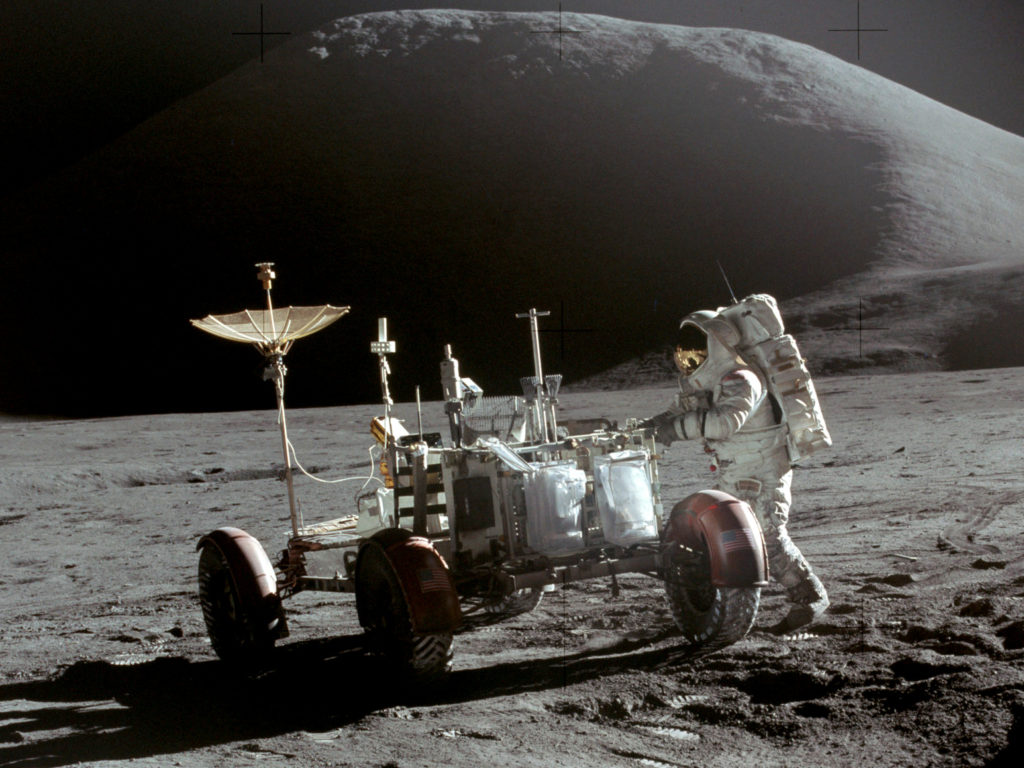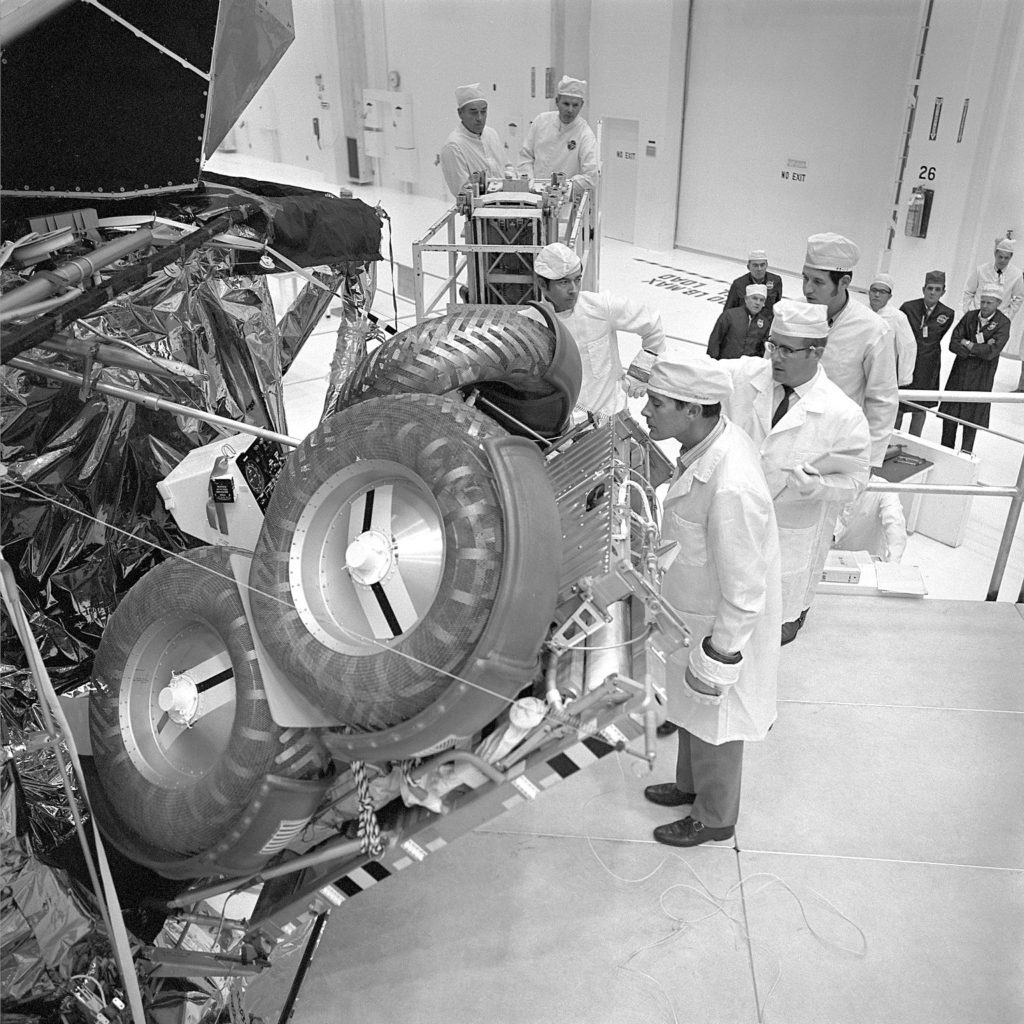One Small . . . Drive?
My last post focused on the Apollo astronaut’s moon suits. Those suits served well, and allowed them to spend time on the lunar surface. From the very beginning, however, there was a desire to not just walk around on the moon, but have a vehicle that could be used to expand the exploration.
Werner Von Braun had early plans for MOLAB, a Mobile Laboratory on the moon. His idea was a big, pressurized vehicle. Other concepts came from a variety of design concepts – wheels ranging from 5 to 12 feet tall, or no wheels at all but rather tank-like treads or even one design that was an Archimedean screw. All of these concepts were prior to any actual experience with what the lunar surface was like.

Some thought it would have deep pools of dust, preventing the use of a vehicle at all (and would even prevent an astronaut from walking there). So they needed more data, and got useful results from two NASA probes.
The first was the Ranger probe in July 1964. This probe could not land, but rather crashed into the lunar surface, all the while running TV cameras that sent footage back to NASA. Next came Surveyor, which was able to actually land, did a little digging, and clearly showed that the surface could support a vehicle.
The problem was weight. Every concept was just too big, too heavy to even get to the moon. After much discussion, NASA decided to table the idea and simply rely on the astronaut’s ability to walk.
And this is where we have a leadership lesson. NASA gave up, but Sam Romano at GM did not. We can learn from his example – if we have an idea that has merit, don’t give up on it. Keep working on it when you can, promote it when you can, and be dedicated to the task. Sam’s approach was, “if there was gonna be a car on the moon, it should be a General Motors car!”
So informally, he continued working on it. There was a space on the lunar module that could potentially be utilized to store a vehicle, but it was small and awkward – a pie-shaped space about 5 x 5 x 5 feet. They had to come up with a way to fit a rover that would accommodate two astronauts, four wheels, and associated support hardware into something a bit larger than a big doghouse! And they had to do all of this while keeping a close eye on the weight. For the Lunar Module, the more weight the more fuel that needed to be used to keep the LEM hovering. This was critical – on Apollo 11 they were down to literally a few seconds of fuel when they finally landed!

They started with a model. One of the designers used his son’s GI Joe, at the time a 1/6 scale representation of an astronaut, so the model was in 1/6 scale as well. They laid it out, then had to figure out how to origami-fold it into the small, odd storage bay. They were able to get it to fit, by folding the seats flat, hinging the rover into three sections, and having the wheel swivel inwards. The wheels formed the V-shape in the pie-shaped space, with the floor facing outward.
So, they had a solution, now they had to sell it. This is where visual aids were really effective. Rather than presenting the concept on paper, they simply took the 1/6 scale remote-control model to NASA, and then stood outside of Werner Von Braun’s office and just drove the little vehicle inside! Von Braun was on the phone at the time, and he immediately hung up and expressed his excitement over the new concept. Ultimately, he embraced the idea, and the rest is history.
What can we learn? If you believe in something, keep at it. Be creative, market the idea. You may just come up with something historic!